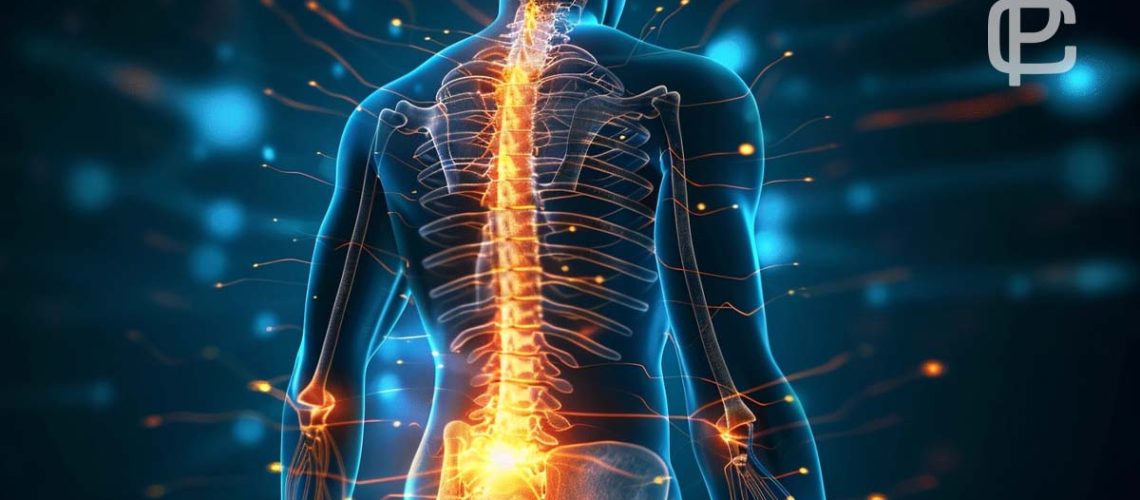The Puzzling Pain: Demystifying Proximal Neuropathy
Ever felt a deep, burning pain in your hip, thigh, or buttocks that seems to come out of nowhere? This could be Proximal Neuropathy, a condition that affects the nerves closer to the center of your body, unlike the more commonly known peripheral neuropathy in the hands and feet.
This condition primarily affects older adults and can be particularly challenging to diagnose due to its uncommon presentation. Symptoms can range from pain and weakness to muscle wasting in the affected area, significantly impacting mobility and daily activities.
While the exact cause remains a bit of a puzzle, it’s often linked to diabetes or other underlying conditions. However, even with a diagnosis, managing Proximal Neuropathy can be complex.
Read on for an entry level understanding the complexities of this condition, exploring its causes, symptoms, and treatment options. We’ll shed light on the latest research and offer insights into living well despite this challenging condition.
What is Proximal Neuropathy
Proximal neuropathy, often referred to as diabetic amyotrophy, is a debilitating nerve disorder primarily seen in individuals with diabetes mellitus, characterized by pain and muscle weakness mainly in the lower body. This condition targets the buttocks, thighs, hips, and legs, leading to substantial muscle wasting and weakness. Patients typically report sudden, severe pain in the hip, buttock, or thigh area. This intense discomfort is often accompanied by leg weakness, which may greatly impair the ability to stand up from a sitting position. The onset of these symptoms represents a profound impact on the quality of life, limiting mobility and daily activities.
The diagnosis of proximal neuropathy involves specialized electrodiagnostic testing, such as nerve conduction studies and electromyography. These tests are critical in confirming the presence of this nerve disorder, enabling healthcare professionals to distinguish it from other conditions with similar symptoms.
Effective management of proximal neuropathy is primarily focused on strict blood sugar control. Through a combination of diet, exercise, and medication, it is possible to prevent the progression or even improve the symptoms of diabetic proximal neuropathy, highlighting the importance of thorough diabetes management in affected individuals.
Causes
Elevated levels of blood glucose and triglycerides, commonly associated with diabetes, are the primary culprits behind the development of proximal neuropathy. These metabolic disturbances lead to significant complications, including nerve and blood vessel damage, which are central to the onset of this condition. The intricate relationship between high blood glucose, triglyceride levels, and diabetes management plays a critical role in both the development and prevention of proximal neuropathy.
Key factors contributing to proximal neuropathy include:
- Thorough blood glucose and triglyceride levels: Persistent elevation can directly damage nerves and blood vessels, leading to neuropathy.
- Nerve damage: Resulting from metabolic imbalances, nerve damage manifests as sudden pain and muscle weakness.
- Blood vessel damage: Compromised blood flow from damaged vessels further exacerbates nerve health, contributing to the condition’s progression.
- Diabetes management: Effective control of blood glucose, blood pressure, and cholesterol levels can mitigate the risk of developing proximal neuropathy.
Understanding these causes emphasizes the importance of thorough diabetes management, including regular monitoring of blood glucose and cholesterol levels, to prevent the severe consequences of proximal neuropathy, such as muscle weakness and loss of reflexes.
Symptoms of Proximal Neuropathy
Understanding the causes of proximal neuropathy lays the groundwork for recognizing its manifestations, which include sudden, severe pain in the hip, buttock, or thigh as a common symptom. This condition, characterized by damage to the peripheral nerves, can lead to a constellation of symptoms that have a notable impact on an individual’s quality of life. The manifestations of proximal neuropathy are not only painful but also debilitating, affecting the patient’s mobility and daily activities.
Key symptoms of proximal neuropathy include:
- Sudden severe pain: Patients often experience abrupt, intense pain in areas such as the hip, buttock, or thigh. This pain can be a primary indicator of the condition.
- Leg weakness: A notable hallmark of proximal neuropathy is leg weakness, particularly evident when attempting to stand from a sitting position, making this task increasingly challenging.
- Reflex changes: Loss of reflexes, including the knee-jerk reflex, is a common observation, signifying nerve damage.
- Muscle wasting and weight loss: Over time, the condition can lead to muscle wasting, contributing to noticeable weight loss in affected individuals.
These symptoms, especially when occurring together, suggest proximal neuropathy and warrant further medical evaluation to confirm the diagnosis and commence appropriate treatment.
Exams and Tests
Several diagnostic tools are essential for confirming the presence of proximal neuropathy, including nerve conduction studies and electromyography (EMG). These methods play a critical role in evaluating the condition by evaluating the electrical conduction of nerves and the response of muscles, respectively.
Alongside these, a thorough approach involving various exams and tests is pivotal for an accurate diagnosis:
- Nerve Conduction Studies and Electromyography (EMG): These are pivotal in evaluating the electrical activity in muscles and the speed of nerve signal conduction.
- Blood Tests: Important for evaluating glucose, triglyceride, and cholesterol levels, as abnormalities in these can be indicative of or contributing factors to proximal neuropathy.
- Imaging Studies: MRI and CT scans are utilized to exclude other causes of symptoms that mimic proximal neuropathy, offering a detailed view of the body’s internal structures.
- Physical Examination: A thorough physical examination is pivotal for detecting physical signs of proximal neuropathy and evaluating the extent of nerve damage.
These diagnostic steps are integral in not only confirming the presence of proximal neuropathy but also in ruling out other potential causes of the symptoms, ensuring that the treatment plan is appropriately targeted.
Treatment
Having outlined the diagnostic approach for proximal neuropathy, the focus now shifts to the available treatment options aimed at managing symptoms and improving quality of life for affected individuals. Central to controlling and improving symptoms of proximal neuropathy is essential blood sugar control. This foundational step is essential, as it directly impacts the progression and severity of the condition.
Physical therapyTreatment approaches like therapeutic exercises, hot/cold therapies and manual joint manipulation to improve mobility and reduce muscul... More emerges as a pivotal element in treatment, focusing on restoring nerve function and enhancing muscle strength, particularly in the legs. This rehabilitation process is instrumental in promoting recovery and improving mobility. Additionally, occupational therapyFocuses on adapting environments or building skills that allow patients to better perform daily activities despite pain or disability. may be integrated into the treatment plan, tailored to individual needs to further support muscle strength and daily function.
For pain relief, a combination of medications, including opiates and antidepressantsCertain antidepressant drug classes like SNRIs and TCAs utilized in low doses to treat nerve-related chronic pain., may be prescribed. These medications address the discomfort associated with proximal neuropathy and improve the patient’s quality of life. In cases where medication provides insufficient relief, corticosteroidA hormone produced by the adrenal gland or synthetically made. Regulates salt and water balance and reduces inflammation. injections or immunosuppressants may be considered. These treatments can offer significant pain relief and are part of a broader strategy to manage the condition effectively.
Prognosis Based on Symptoms
The prognosis for individuals diagnosed with proximal neuropathy varies, primarily influenced by the onset of symptoms and the effectiveness of early management strategies. Most patients can expect a generally good outlook, with several key factors playing a role in their recovery and long-term outcomes.
- Spontaneous Recovery: A substantial number of patients experience spontaneous recovery within a few years, even without specific treatment, highlighting the body’s capacity for self-repair.
- Physical Therapy: Engaging in physical therapy greatly aids in the recovery process by enhancing muscle strength and mobility, thereby accelerating the return to normal function.
- Diabetes Control: For patients with diabetes, stringent control of blood glucose levels is crucial. Proper diabetes management can prevent further nerve damage and optimize the prognosis.
- Early Diagnosis and Management: The early identification of proximal neuropathy and the implementation of appropriate management strategies are crucial for reducing long-term complications and improving outcomes.
When Should I Contact Professional Doctor?
Recognizing when to seek medical advice for proximal neuropathy is important for timely intervention and management of the condition. Proximal neuropathy affects the nerves and can lead to severe consequences if not addressed promptly. When sudden, severe pain manifests in the hip, buttock, or thigh, it is a clear signal that the nerves may be compromised, necessitating an immediate evaluation by a healthcare professional. This pain often points to blood flow issues or nerve damage that requires medical insight.
Weakness in the legs, particularly when trying to stand from a sitting position, highlights a significant impact on the muscles and could indicate underlying nerve problems. Additionally, the loss of reflexes, such as the knee-jerk reflex, is a critical symptom that should prompt medical consultation. These signs suggest that the nerves controlling muscles and reflexes are not functioning correctly.
Muscle wasting and unexplained weight loss are alarming symptoms that should not be overlooked. They indicate a more advanced stage of proximal neuropathy, where the muscles are deteriorating, possibly due to the nerves failing to stimulate them adequately. Any new or worsening symptoms related to proximal neuropathy demand prompt evaluation to manage the condition effectively and mitigate its progression.
Can Proximal Neuropathy Be Prevented with a timely Treatment method in place?
Managing proximal neuropathy effectively often hinges on the timely implementation of a treatment plan, which can significantly reduce the risk of its development and progression. The key to preventing proximal neuropathy, especially for individuals with diabetes, lies in thorough and proactive management strategies that focus on maintaining ideal health and preventing complications before they arise.
To achieve this, several critical steps should be emphasized:
- Monitoring and controlling blood glucose levels: Keeping blood glucose levels within target ranges is important to prevent nerve damage.
- Regulating blood pressure and cholesterol: These measures help maintain cardiovascular health, which is essential for preventing complications associated with diabetes, including proximal neuropathy.
- Early diagnosis and management of symptoms: Recognizing early signs and symptoms allows for immediate intervention, which can slow or halt the progression of neuropathy.
- Participating in physical and occupational therapy: These therapies can help maintain muscle strength and improve nerve function, potentially preventing the muscle weakness associated with proximal neuropathy.

